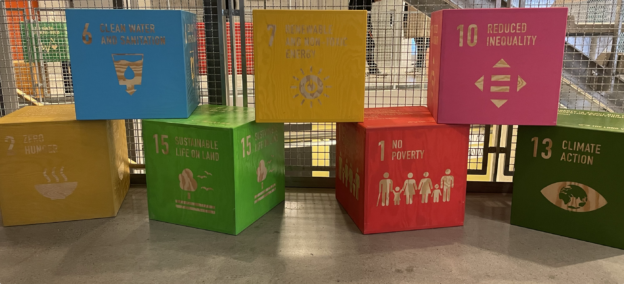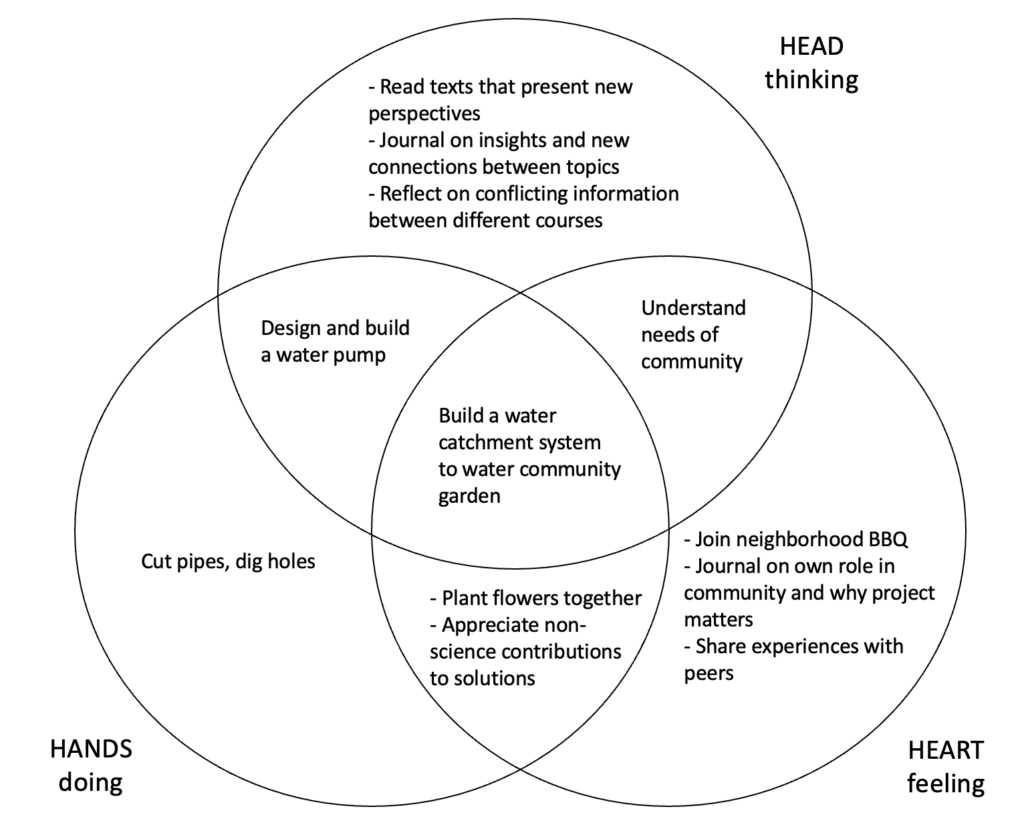A lot of the work I am doing at LTH is related in one way or other to teaching (to teach) sustainability. Here are some notes on an article I found helpful:
“Achieving transformative sustainability learning: engaging head, hands and heart” Sipos, Battisti & Grimm (2008)
Transformative sustainability learning (TSL) is an approach to teaching sustainability. It builds on engaging head, hands and hearts of students in the learning process. It was developed by Sipos et al. (2008) as a pragmatic suggestion for how teach sustainability within already existing higher education structures (rather than, as is often called for, in completely new structures). It is based on two premises: 1) Students’ learning is localized, both at university in a formal context (and even there, it is often broken into distinct subjects that are taught completely independent of each other), and in the rest of their lives, i.e. their homes, location of leisure-time activities, etc, in a more informal context. This will lead to conflicts between what is learned in different contexts, unless 2) learning is situated across all those contexts in the first place, and university purposefully integrates all the non-university contexts with the other relevant communities.
The organising principle of integrating learning objectives from cognitive (head), psychomotor (hands), and affective (heart) domains is achieved by creating personal experiences that link, and influence, students’ knowledge, skills, and attitudes.
There are many examples of this in practice, many of which include the same elements of having been co-created (not only with faculty, staff and students, but also with the wider community), providing community service. Most of these examples also have a focus on journaling and reflective practices to really support the transformation.
Sipos et al. (2008) illustrate the head, hands and heart organising principle in a Venn diagram with examples, which I find very useful to check where planned activities fall, and what aspects could be included to make the three (see my interpretation of their Figure 1 below, also inspired by the case study by Noy et al., 2017). I’m including my own examples, because while “painting a fence” illustrates what hands do, I tried to find examples that are a bit closer to what we might actually do in a course. In this case, we are building a water catchment system to water a community garden.
I found the exercise of coming up with examples surprisingly difficult and at the same time very interesting. While most of my courses do happen in the head part, there are definitely the odd occurrence of hands-on kitchen oceanography and a lot of connecting with peers and the teacher. But I have never explicitly brought the three domains together, and that’s something I want to try next!
Sipos, Y., Battisti, B., & Grimm, K. (2008). Achieving transformative sustainability learning: engaging head, hands and heart. International journal of sustainability in higher education.
Noy, S., Patrick, R., Capetola, T., & McBurnie, J. (2017). Inspiration from the classroom: A mixed method case study of interdisciplinary sustainability learning in higher education. Australian Journal of Environmental Education, 33(2), 97-118.


Thank you for sharing. Transformative sustainability learning is essential for addressing global challenges. Students in Greater Noida can explore institutions like the Top Engineering college and Best B.Tech College to engage in such initiatives. Additionally, considering the Best MBA College in Greater Noida can provide further insights into sustainable management practices.